Even if you're a good cook, sometimes home-cooked food just doesn't taste the same as it does in a restaurant. Of course, there are some utensils and appliances in a professional kitchen that the average person doesn't have access to, but it's not just about the tools.
There are plenty of techniques and "secrets" you can emulate at home to make your own cooking better, and here are 9 of the most important things professional chefs do to make their food taste so good.
#1. They Cook with High Heat
Some people are uncomfortable cooking at high temperatures, but a steak won't sear on medium heat, and vegetables just turn to mush if you don't cook them fast enough. Obviously you don't want to turn up the heat on everything, but you shouldn't be afraid to use it when you need to.
So how do you know when to cook on low, medium or high? Consider the texture you're going for. High heat cooks the outside much faster than the inside, so if you want a roast to be super tender, low and slow is best. But if you want a deep brown crust, hotter is better.
#2. They Prepare Everything in Advance
If you've ever had that moment of panic when it's time to add the onion you forgot to dice, you know that having all your ingredients measured, chopped, and ready to go can make all the difference in some dishes. Mise en place is a French phrase that means "set in place," and it's one of the first lessons taught to professional cooks.

A proper mise en place includes everything from the cooking oil to the finishing spices and ensures that you're as efficient as possible. It may seem like it's just more dishes to wash, but once you see how much easier it makes things, those prep bowls will feel like a good investment.
#3. They Use a Ton of Shallots
Shallots are one of the most underappreciated ingredients outside of professional kitchens. Anthony Bourdain wrote in Kitchen Confidential that his restaurant goes through 20 pounds of them a day, and they can be used to improve almost any savory dish.

#4. They Make Their Own Stock
Tons of recipes call for beef, chicken or vegetable stock, and most home cooks use the canned or boxed stuff because it's easier. But homemade stocks and broths taste much better and add more flavor to the finished dish. Most professional kitchens make a large batch of stock at least once a week and always keep it handy.

Making homemade stock is a lot easier than it sounds, and you don't really even need to buy anything. You can use the bones from meat you cook during the week and the scraps, ends, and extra pieces of produce. Throw it all in a pot, cover with water and boil for an hour or two. You can find guides for beef, chicken, and vegetable stock on The Kitchn.
#5. They Cook Everything in Butter
When asked what makes the difference between restaurant and home-cooked food, butter is one of the first things a lot of chefs bring up. It has a higher smoke point than olive oil and adds a lot of flavor to meats and vegetables.

Butter also adds that silky, creamy texture to sauces and makes everything richer. If you have any doubts, try an experiment. The next time you make a tomato sauce, taste it at the very end, then stir in a pat of butter and taste it again. That's all the convincing you'll need.
#6. They Let Their Meat Rest
It may be agonizing to wait, but if you slice into a steak as soon as it's done, you're just letting all those delicious juices run right out. The liquid is concentrated in the center right after cooking, so letting meat rest for a few minutes gives the juices time to redistribute so they stay put when you cut it.

For a steak that's not too thick, 5 to 10 minutes should be sufficient, but the larger the cut, the longer it needs. Check out J. Kenji Lopez-Alt's in-depth analysis for details on the effects of resting meat and how long different cuts should take.
#7. They Use Fresh Herbs & Spices
You probably know there's a world of difference between fresh and dried herbs like basil and rosemary. But what about spices? A lot of people assume that all bottled spices are equal, but that jar of paprika that's been in your cabinet for 5 years won't have nearly as much flavor as it used to.
A good place to start is to clean out your cabinet of spices you know are past their prime. Do a smell test, and if it doesn't have a strong scent, toss it. If you know you haven't used it in two years, toss it, even if it's unopened.

When it comes to replacing them, try to get the freshest spices you can. If there's a spice market in your area, that would be ideal, but they aren't exactly common. The next best thing would be the bulk bin spices at your grocery store. They're bound to be fresher than the ones that are already packaged.
If bottled spices are all you can find, think about how often you use each one when you buy them. Look for smaller bottles of the ones you don't use much, and if they've already got dust on them, you might want to look elsewhere.
#8. They Know Presentation Matters
You may think fancy plating is a waste of time, but professional chefs don't do it without reason. The way your food looks is the first factor in making you want to eat it. Why else would we spend so much time pinning pictures of pretty food on Pinterest?

That doesn't mean you have to spend a ton of money on fancy garnishes or take half an hour to plate your food. There are plenty of small and easy ways to make food look more appetizing. Try to use ingredients with colors that complement each other, and bring food to the table in serving bowls, not the pans it was cooked in.
If it just doesn't look right, sometimes a few simple details can make a huge difference. Use sauces or produce that are already part of the meal as garnishes to tie it all together. Just don't be afraid to be creative—try different arrangements and combinations, and be sure to take pictures for future reference of what works and doesn't.
#9. They Have Mad Knife Skills
Chopping everything into uniform pieces isn't just about looks. When you have same-size chunks, it all finishes cooking at the same time. That way, you don't end up with some pieces raw and others cooked to mush. It takes a while to get your knife skills up to par, but once you do, it cuts down your time in the kitchen and makes the texture of your dishes much better.

Different types of produce require different techniques, so be sure to check out our guides on how to cut up onions, fresh ginger, butternut squash, and many more.
Just updated your iPhone? You'll find new emoji, enhanced security, podcast transcripts, Apple Cash virtual numbers, and other useful features. There are even new additions hidden within Safari. Find out what's new and changed on your iPhone with the iOS 17.4 update.










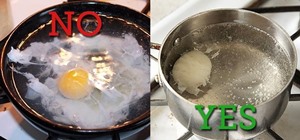

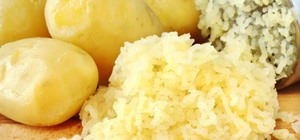
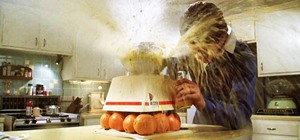

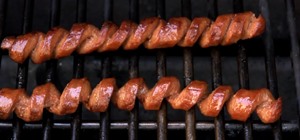






1 Comment
Everything look so nice.
Share Your Thoughts